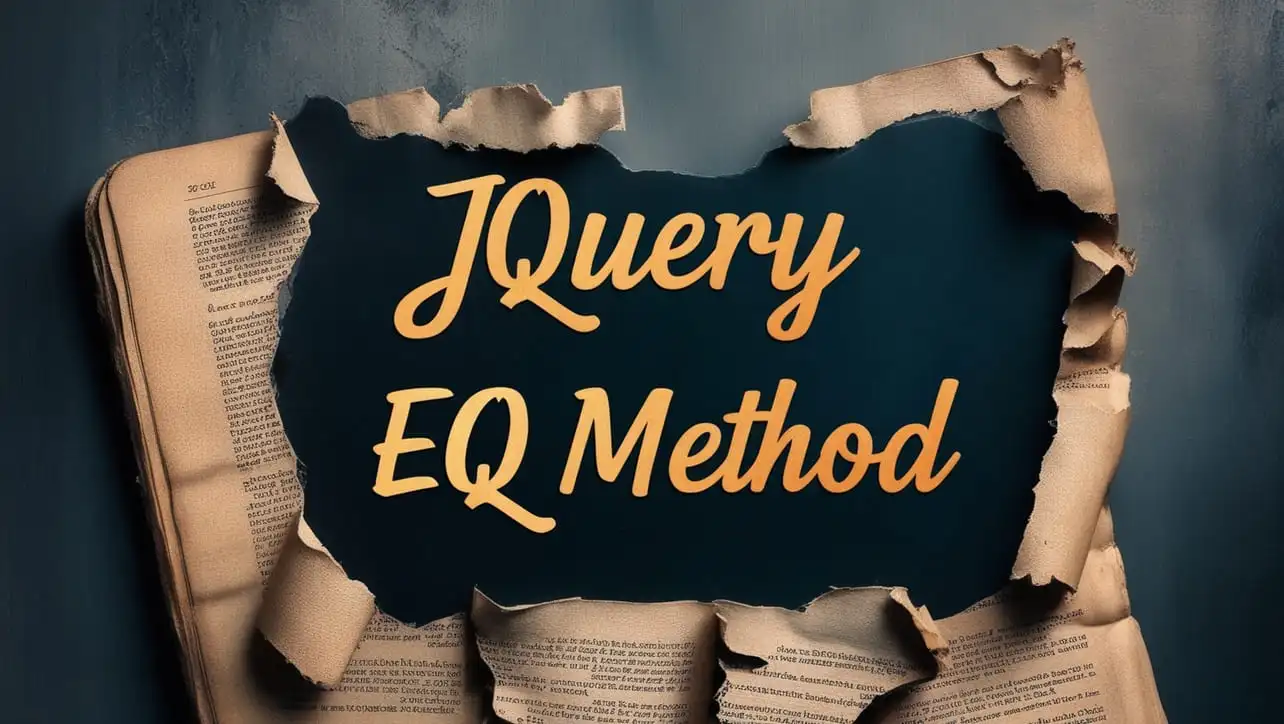
jQuery Topics
- jQuery Introduction
- jQuery Callbacks
- jQuery deferred
- jQuery selectors
- jQuery Ajax Events
- jQuery Ajax Methods
- jQuery Keyboard Events
- jQuery Keyboard Methods
- jQuery Form Events
- jQuery Form Methods
- jQuery Mouse Events
- jQuery Mouse Methods
- jQuery Event Properties
- jQuery Event Methods
- jQuery HTML
- jQuery CSS
- jQuery Fading
- jQuery Traversing
- jQuery Utilities
- jQuery Properties
jQuery .eq() Method

Photo Credit to CodeToFun
🙋 Introduction
In jQuery, the .eq() method is a powerful tool for targeting specific elements within a set of matched elements. It allows you to select an element at a specified index, providing fine-grained control over DOM manipulation. Understanding and mastering the .eq() method can significantly enhance your ability to work with collections of elements in your web projects.
In this guide, we'll explore the usage of the jQuery .eq() method with clear examples to help you harness its full potential.
🧠 Understanding .eq() Method
The .eq() method is used to reduce the set of matched elements to the one at the specified index. It is particularly useful when you need to target a specific element within a collection of elements, such as a list of items or table rows.
💡 Syntax
The syntax for the .eq() method is straightforward:
$(selector).eq(index)📝 Example
Selecting Specific Elements from a Collection:
Suppose you have a list of items and you want to select and manipulate a specific item based on its index. You can achieve this using the
.eq()method as follows:index.htmlCopied<ul> <li>Item 1</li> <li>Item 2</li> <li>Item 3</li> </ul>example.jsCopied$("li").eq(1).css("color", "red");This will set the text color of the second <li> element to red.
Manipulating Table Rows:
If you have a table and you need to work with specific rows, the
.eq()method comes in handy. For example:index.htmlCopied<table> <tr><td>Row 1</td></tr> <tr><td>Row 2</td></tr> <tr><td>Row 3</td></tr> </table>example.jsCopied$("tr").eq(2).addClass("highlight");This will add a CSS class "highlight" to the third table row.
Handling Events on Specific Elements:
You can also bind events to specific elements within a collection using the
.eq()method. Here's an example where we alert a message when the second button is clicked:index.htmlCopied<button>Button 1</button> <button>Button 2</button> <button>Button 3</button>example.jsCopied$("button").eq(1).click(function() { alert("Button 2 clicked!"); });Chaining with Other Methods:
The
.eq()method can be chained with other jQuery methods to perform complex operations. For example, you can combine it with .css(), .addClass(), .removeClass(), etc., to achieve various effects efficiently.
🎉 Conclusion
The jQuery .eq() method is a versatile tool for targeting specific elements within a set of matched elements. Whether you need to select and manipulate elements, handle events, or perform other DOM operations, this method provides a convenient solution.
By mastering its usage, you can efficiently work with collections of elements in your web projects, making them more dynamic and interactive.
👨💻 Join our Community:
Author

For over eight years, I worked as a full-stack web developer. Now, I have chosen my profession as a full-time blogger at codetofun.com.
Buy me a coffee to make codetofun.com free for everyone.
Buy me a Coffee












If you have any doubts regarding this article (jQuery .eq() Method), please comment here. I will help you immediately.